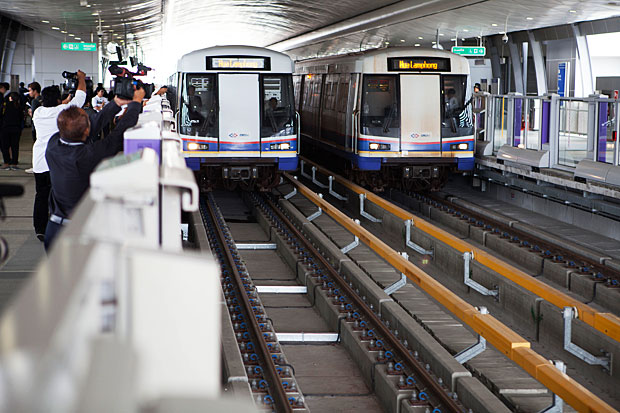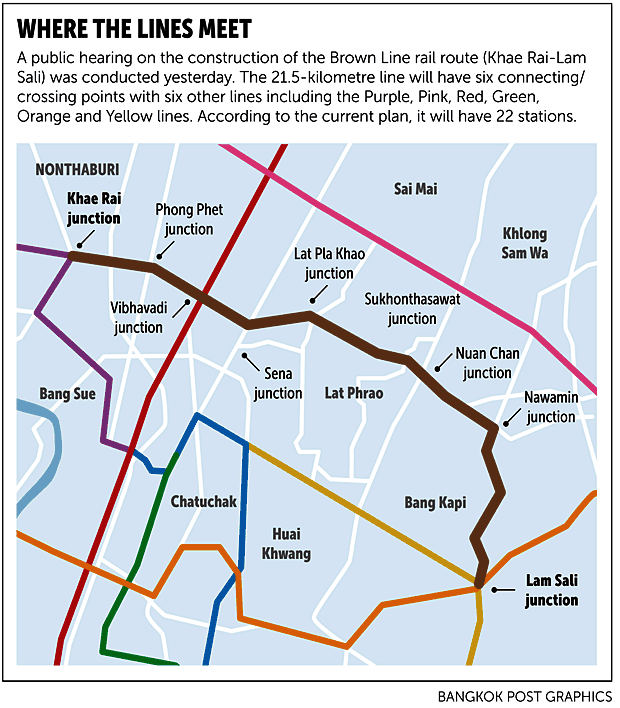
An East-West Brown Line is firmly on the to-do list to attract more commuters, as it will eventually serve as a feeder line linking people to six other electric rail routes in Bangkok, Transport Minister Arkhom Termpittayapaisith says.
Though experts are still conducting a feasibility study and the operating system is not yet decided, officials are hopeful the project will become a reality.
They have even outlined a conceptual route stretching east to west across the capital, a construction timeline and a goal to relieve traffic congestion with the new light rail system.

The study, being conducted by the Japan International Cooperation Agency (Jica), is expected to be completed next year, paving the way for construction and the official opening which could be as early as 2022, officials said yesterday.
With a design to have the route intersect six other planned rail lines, it will be a feeder that will "complete route coverage", taking people to areas not covered by the main public transport system, Chaiwat Tongkamkoon, head of the Office of Transport and Traffic Policy and Planning, said.
He echoed Mr Arkhom Termpittayapaisith comments that it would encourage people, who mainly rely on cars, to shift to electric trains as roads are full to capacity and are struggling to serve an increasing number of vehicles.
According to the initial concept, the 21.5 Brown Line will connect six other lines, currently being built or prepared for construction. They are the Purple Line (Tao Poon-Klong Bang Phai in Nonthaburi) in the western suburbs, the Red Line (Bang Sue-Rangsit), Green Line (Mor Chit-Khu Khot in Pathum Thani), Yellow Line (Lat Phrao-Sam Rong in Samut Prakan), Orange Line (Thailand Cultural Centre- Min Buri) and the Pink Line (Khae Rai-Min Buri in eastern Bangkok).
Of these six routes, only part of the Purple Line has been opened so far.
The Brown Line is expected to run on a light rail system with relatively "light" passenger capacity when compared with the Purple Line and Blue Line subway, which connects Hua Lamphong and Bang Sue.
The ministry prefers this system because it will be faster to build as there would be no need to come up with a detailed design as required by a heavy rail system, Mr Arkhom said.
There are other issues that need consideration, including train types, he said.
Officials need to decide whether they will use an ordinary monorail platform or Automated Guided Transit (AGT), which is a driverless system. The latter is more flexible in its operation and maintenance because it is based on an international signal system compatible with many types of train, Mr Chaiwat said.
Mr Arkhom said experts are also needed to consider whether to also build a new expressway along the proposed Brown Line route to link it with three other expressways -- Si Rat, Don Muang Tollway and Chalong Rat -- which run across the city in order to relieve congestion.
Participants in a recent seminar on the Brown Line project opposed the expressway idea.
Once the 14-month feasibility of Brown Line is completed, officials will spend another nine months drafting an investment plan, six months for bidding and contract signing and three years for construction, Mr Chaiwat said.